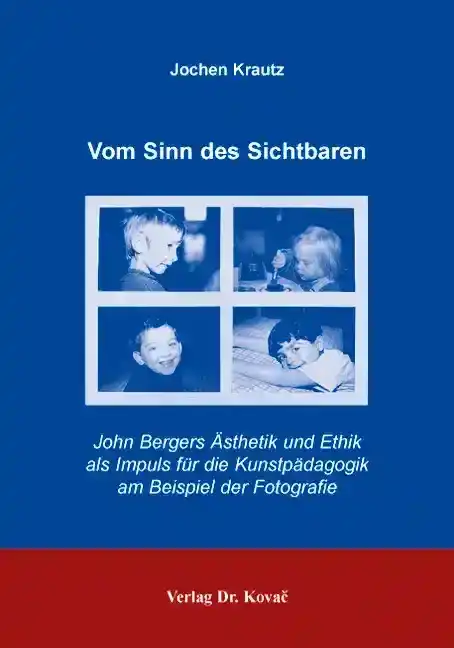Jochen KrautzVom Sinn des Sichtbaren
John Bergers Ästhetik und Ethik als Impuls für die Kunstpädagogik am Beispiel der Fotografie
Schriften zur Kunstpädagogik und Ästhetischen Erziehung, volume 1
Hamburg 2004, 412 pages
ISBN 978-3-8300-1287-0 (print)
About this book deutschenglish
This thesis represents the first systematic analysis of John Berger’s complex work as an author, art critic, aesthetician, theorist of photography, political essayist and much more to determine his aesthetical and ethical principles. According to Berger, art must always refer to life and give meaning by allowing what is visible to be experienced as part of a totality. Only then can art fulfil man’s ‘ontological right’ to meaning. As a consequence, art is tied to and oriented towards social values. John Berger’s critical and humanistic aesthetics and ethics thus prove to be implicitly educational. This approach is used to provide stimulus for a reconsideration in the discourse on art education. Existing concepts of art education and teaching methods are analyzed with respect to what meaning they give to the visible. In addition, Berger’s theory draws attention to the necessity to base art education on anthropological principles in order to meet man’s essential need for meaning. Only then can art education fulfil its potential according to John Berger: Art education is therefore able to initiate and impart experience, to stimulate empathy and create hope, it can provide meaning and encourage personality. This personal affirmation forms the basis for the development of critical thinking and promotes social involvement. Art education can therefore foster man’s social and individual nature. Berger represents both aspects in his work and demonstrates them with aesthetic power: Man is the measure and goal of meaningful art. The purpose of art and art education is therefore to promote experience, empathy, hope, and thus meaning in the framework of social responsibility. According to Berger, photography is an exceptional medium in this regard. It is used as an example here to examine the interrelationship between art, art education and meaning. This thesis’ proposed didactic theory is illustrated by means of a teaching unit based on Edward Steichen’s 1955 ‚Family of Man’ exhibition.Erschienen unter Creative Commons Lizenz
Keywords
ÄsthetikÄsthetische ErziehungEthikFotodidaktikFotografieKunstdidaktikKunstkritikKunstpädagogikKunsttheoriePädagogikIhr Werk im Verlag Dr. Kovač

Möchten Sie Ihre wissenschaftliche Arbeit publizieren? Erfahren Sie mehr über unsere günstigen Konditionen und unseren Service für Autorinnen und Autoren.
